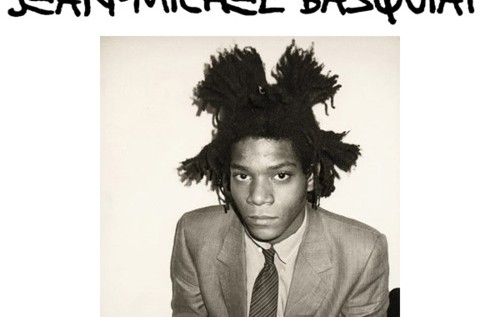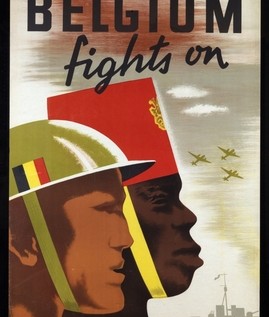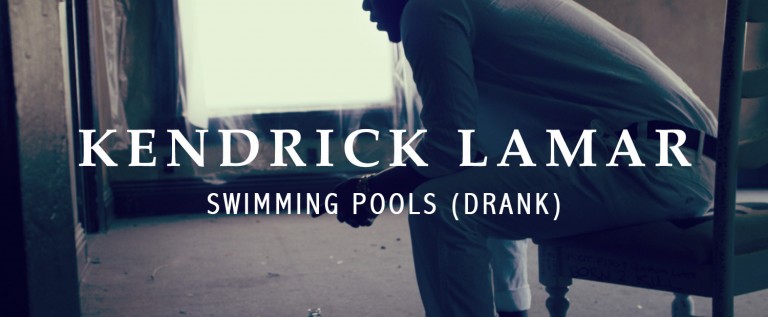Jean-Michel Basquiat: Black Art Criteria vs. Eurocentric American Art Criteria by @MelanieCoMcCoy

NOTE TO READER: This is a series so be mindful that this post is one part of many other posts to come. Enjoy- Melanie “CoCo” McCoy
In November of 1982, ART/new york, a video series on contemporary art, invited a young and bright upcoming artist named Jean-Michel Basquiat for a filmed interview entitled “Young Expressionists.” Although Basquiat was reluctant, he agreed to do the interview. Marc H. Miller, the interviewer asks Basquiat, “No Haitian primitives on your wall?” Basquiat, unclear of what he is asking responds, “At home?” Miller responds by answering yes, which compels Basquiat to ask while sarcastically snickering, “Haitian primitives? What do you mean? People?” Miller embarassed explains that he meant paintings. The assumption was made that because Basquiat was an artist with a black cultural background that black art was where his artistic interest also lied. Some have argued that black art is inherently different from art in the Eurocentric perspective in that it is supposed to unveil a certain message.
Black scholars and revolutionaries believe that a person with a black cultural background is an artist by nature and the black artist should uphold the criteria of black arts by remaining true to their cultural heritage, seeking to reveal honesty and truth, and through their art the artist holds a responsibility to the community. Jean-Michel Basquiat, although he didn’t reside in the artistic box of being black, his created works if not all were a derivative of the criteria of black art with a small trickling influence from the Eurocentric American world.
In an essay entitled “The Negro in Literature and Art” written by the esteemed black intellect,W. E. B. Du Bois, he opens the first paragraph by stating, “The Negro is primarily an artist.” Du Bois believes that regardless of the craft or skill of a black person it should be recognized that they are inwardly an artist which transcends outwardly. This is known today as the black aesthetic, which is a black artistic nature and beauty of an individual. This term became more familiarized during the Black Arts Movement of the 1960s and 1970s. “The usual way of putting this is to speak disdainfully of his sensual nature,” says Du Bois. “This means that the only race which has held at bay the life destroying forces of the tropics, has gained therefrom in some slight compensation a sense of beauty, particularly for sound and color, which characterizes race.” Du Bois provides several examples of how black art and the nature of black people influenced the world historically. He accredits poets and writers of literature with the incredible ability to create narratives; they never truly stood out in American society. “Outside of literature the American Negro has distinguished himself in other lines of art. One need only mention Henry O. Tanner whose pictures hang in the great galleries of the world, including the Luxembourg,” Du Bois states. Visual artists who were culturally black were never truly taken seriously in the art world, especially the American art world. Jean-Michel Basquiat challenged this unwritten rule and circumstance, when he stepped out into the world during the 1970’s.
Basquiat was born to a fourth-generation Puerto Rican mother and a Haitian father on December 22, 1960. Having a culturally diverse background, it came to no one’s surprise that this influenced him and attracted him to the arts at an early age. His father, Gerard Basquiat, was an accountant with a love for jazz and his mother, Matilda Andrades, spoke three languages which were Spanish, French and English. When Basquiat was a young boy he was hit by a car which caused him to stay in a hospital for the removal of his spleen. During his hospital stay Basquiat’s mother gave him the book “Gray’s Anatomy.” In his early adult years, Basquiat would go on to start a band called Gray. Basquiat’s mother always encouraged him to pursue art. Basquiat’s parents’ marriage fell apart, which is believed to be because of his mother’s serious battle with depression.
In 1977, one year before his expected graduation date Basquiat quit high school. He left his home and was homeless. In the documentary Jean-Michel Basquiat: The Radiant Child (2010), close friends, ex-girlfriends, critics, and artists gave an account to his life. In a rare interview between Basquiat and his friend, Basquiat smiled when his friend said that she heard that he “survived on the streets from having all these different girlfriends.” He replied by stating, “That was some of it.”
In the late 1970’s, Basquiat went under the graffiti tag name SAMO in New York City. SAMO’s name came from the saying “same old shit.” SAMO was plastered all over New York City and was even receiving attention in various local newspapers. With quotes in various places such as “SAMO IS DEAD, “SAMO as a neo art form,” and “SAMO as an alternative 2 playing art with the ‘radical chic’ sect on Daddy’s $ funds,”New Yorkers wanted to know who SAMO was. In 1980, to the surprise of young hip New Yorkers, SAMO made his first open appearance at the Canal Zone Party. As a source of income, Basquiat made sweatshirts and postcards of his artwork and sold them. Basquiat met Andy Warhol at a restaurant and asked if Warhol would like to purchase any of his postcards. Warhol bought two or three postcards.
To be continued…





![Suzann Christine (@SuzannChristine) – Potential [Audio]](http://iamnotarapperispit.com/wp-content/uploads/2014/01/bda4c08673e911e3b5140e9867dae172_8-640x317.jpg)

RT @King_Spit: Jean-Michel Basquiat: Black Art Criteria vs. Eurocentric American Art Criteria by @MelanieCoMcCoy http://t.co/tOQ148CpLM
RT @iamnotarapper58: Jean-Michel Basquiat: Black Art Criteria vs. Eurocentric American Art Criteria by @MelanieCoMcCoy http://t.co/th6Z8nGT46
RT @King_Spit: Jean-Michel Basquiat: Black Art Criteria vs. Eurocentric American Art Criteria by @MelanieCoMcCoy http://t.co/tOQ148CpLM
Jean-Michel Basquiat: Black Art Criteria vs. Eurocentric American Art Criteria by @MelanieCoMcCoy http://t.co/tOQ148CpLM
Jean-Michel Basquiat: Black Art Criteria vs. Eurocentric American Art Criteria by @MelanieCoMcCoy http://t.co/th6Z8nGT46
Jean-Michel Basquiat: Black Art Criteria vs. Eurocentric American Art Criteria by @MelanieCoMcCoy http://t.co/xWnZ7jDra7
2Jean-Michel Basquiat: Black Art Criteria vs. Eurocentric American Art Criteria by @MelanieCoMcCoy – http://t.co/GNbNXJxOYr
RT @ReceeCj: 2Jean-Michel Basquiat: Black Art Criteria vs. Eurocentric American Art Criteria by @MelanieCoMcCoy – http://t.co/3e7iIOW3gD
2Jean-Michel Basquiat: Black Art Criteria vs. Eurocentric American Art Criteria by @MelanieCoMcCoy – http://t.co/3e7iIOW3gD